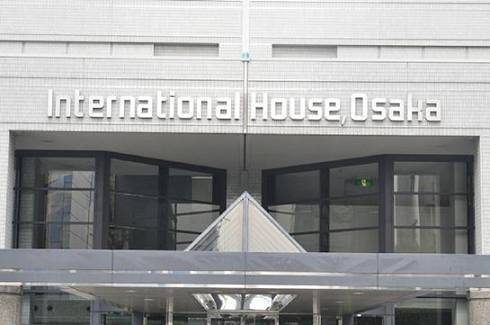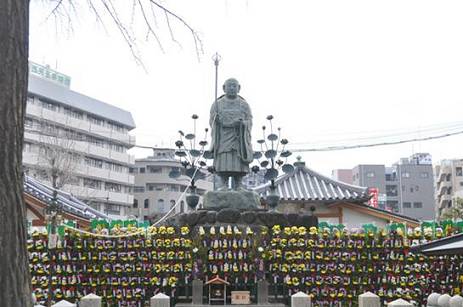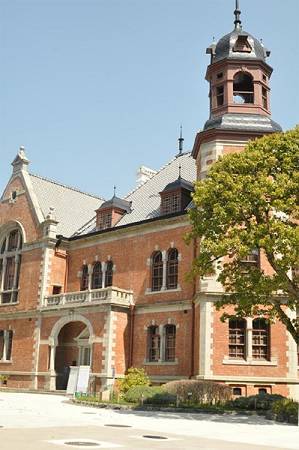23RD WORLD CONGRESS OF POETS IN OSAKA, JAPAN, MARCH 2014
The Sight and Scenes
Some of the many highlights of our international adventure with poetry were the sites of and around Osaka. We found Osaka to be an extremely clean and modern city with friendly, helpful people, wonderful shops, diverse stores and gigantic malls. The subway was a maze of modern shopping opoortunities. The ambiance of the city was so good that one World Congress of Poets participant stated that if he could speak Japanese, he would stay there. Our International House Convention Center was modern and commodious. Our Awina Hotel was clean, convenient and tried their best to please. Our side trip to Kyoto was magnificent. Our after trip to Nara National Park was inspirational. Side trips taken by individuals or small groups before the Congress began were exciting and fulfilling. Please join us with a photo journey through the site seeing tours and adventures from the 23rd World Congress of Poets.
The following are photos from the following, unless otherwise noted:
- Photos of Osaka by Kay Renz, Jeffrey Garland and Judy Hardin Cheung
- Photos of Tennoji Temple in Osaka were taken by Jeffrey Garland, Judy Hardin Cheung, Mary Halliburton and Kay Renz
- Photos of Kyoto were taken by Wirat (Koh) Siriwatananawin, Kaemkam (Kaw) Phithakwong, Judy Hardin Cheung and Weilin Fang
Osaka is a clean and modern city.
Osaka–modern, orderly, safe, uncrowded when it was not rush hour.
Osaka is sometimes called the Venice of Japan due to its extensive waterfront, as seen here from the window of our tour bus.
The subway systems of Osaka were clean, modern, efficient, and scary to those of us who do not usually use subways. With a guide such as Noriko, our pre-Congress excersions were flawless.
For the adventurous, someone was always ready to help in English with a smile when independent travelers could not find the way.
The less adventurous strolled the streets of Osaka before the Congress, enjoying the ambiance of the city.
Our Awina Hotel had an expansive lobby, but very few seats. We came and went so fast we rarely needed to sit. When we did need to sit in large groups for an extended time, there was a restaurant and a coffee shop as lobby extentions.
Our meeting hall, the Osaka International House Convention Center was large, near the hotel, and very modern.
The lobby of the International House Conference Center was spacious, modern, efficient and clean. It even had free WiFi!
On our first excursion, just outside our destination of the Tennoji Temple, the oldest Buddhist temple in Japan, travelers found wonderful souvenier shops and snack booths.
Our first Congress excursion was the Tennoji Temple, the oldest Buddhist temple in Japan. It was within walking distance of our hotel and convention center. Many poets enjoyed the city scenes on their stroll. Others took taxis.
The background of a prayer wall at Tennoji Temple shows the juxtaposition between old and new, a concept thuroughly entertwined in Japanese culture.
The 5 roofed pagoda at the Tennoji Temple in Kyoto
Dr. Kenneth Kuanling Fan poses at the inner gate of the Tennoji Temple. When asked if he knew he could go to the top of the pagoda, he laughed and said he had been to the top and back already.
Poets originating from USA, Viet Nam, Philippines and China all line up for a photo to share with their friends and fellow poets when they go home. Sharing poems, stories and photos is a way to keep the Congress fresh between gatherings.
On the 3rd afternoon, we ventured out to the Yamamoto Noh Theater for traditional entertainment, including Uwe Walter from Japan and Germany, reciting his poem, “On Japan: a Whale,” and playing the sakuhachi flute in the style of Komuso, a mendicant Zen priest of the Fuke sect.
Seating in the Noh Theater was traditional Japanese style with tatami mats. Benches were provided for those of us who needed them.
On the bus, Rex Valentine played his ukulele to lead a sing-a-long.
Kyoto was our third excursion. From the windows of the bus as we entered town, the cherry blossoms long the river were spectacular.
Judy and Noi find the entrance to the Sanjyusangendo Temple in Kyoto.
Joy in front of the red doors of Sanjyusangendo Temple, Kyoto.
Disembarking from our tour bus in the Imperial Palace Garden of Kyoto, we had no idea of the incredible beauty awaiting us. Kaw stops to take a photo of Koh taking a photo of her.
We rested, read some poetry and ate lunch in the Doshishi University in Kyoto
Weiling Fang rested on a bench and took photos of the beautiful campus.
Poets were served a bento box lunch in the Doshish University cafeteria. A few adventurous poets bought their lunch in the cafeteria line.
We would all like to thank our supporters and financial sponsors. Without them, our 23rd World Congress of Poets could not have been so grandly successful. Thank you, Thank you.
Osaka International House Foundation.
UNESCO Chiba-Tomizato.
Chiba Poets Club
Japan Poets Association
Osaka Convention & Tourism Bureau
Osaka City Government: Midori to Yutori no Kai
Dr. Toshimi Horiuchi
Mr. Yoshiro Tobe
Ms.Kimiko Naito
Ms.Makiko Iwata
Ms.Junko Kitaoka
Ms.Katsuko Morita
Ms.Yumiko Ueda
Mr. Kohei Ikura
Mr. Kozaburo Nagatsu
Hotel Osaka Awina
Tabi-nabi Net
Jalan net
Rakuten net
Chikurinkan Publishing Company
Poetry Reciting Group: The Winds
Kansai Poets Association
Japan Poets Club
Koteki Tanka Group in Matsue
Kofuukai Tanka Group in Tokyo
Kobo Poetry Magazine in Chiba
Saku Poetry Magazine in Osaka
Shijo Group in Tokyo
Poetry & Thoughts magazine
Keisen University
Komazawa University
UPLI/WCP Committee



























